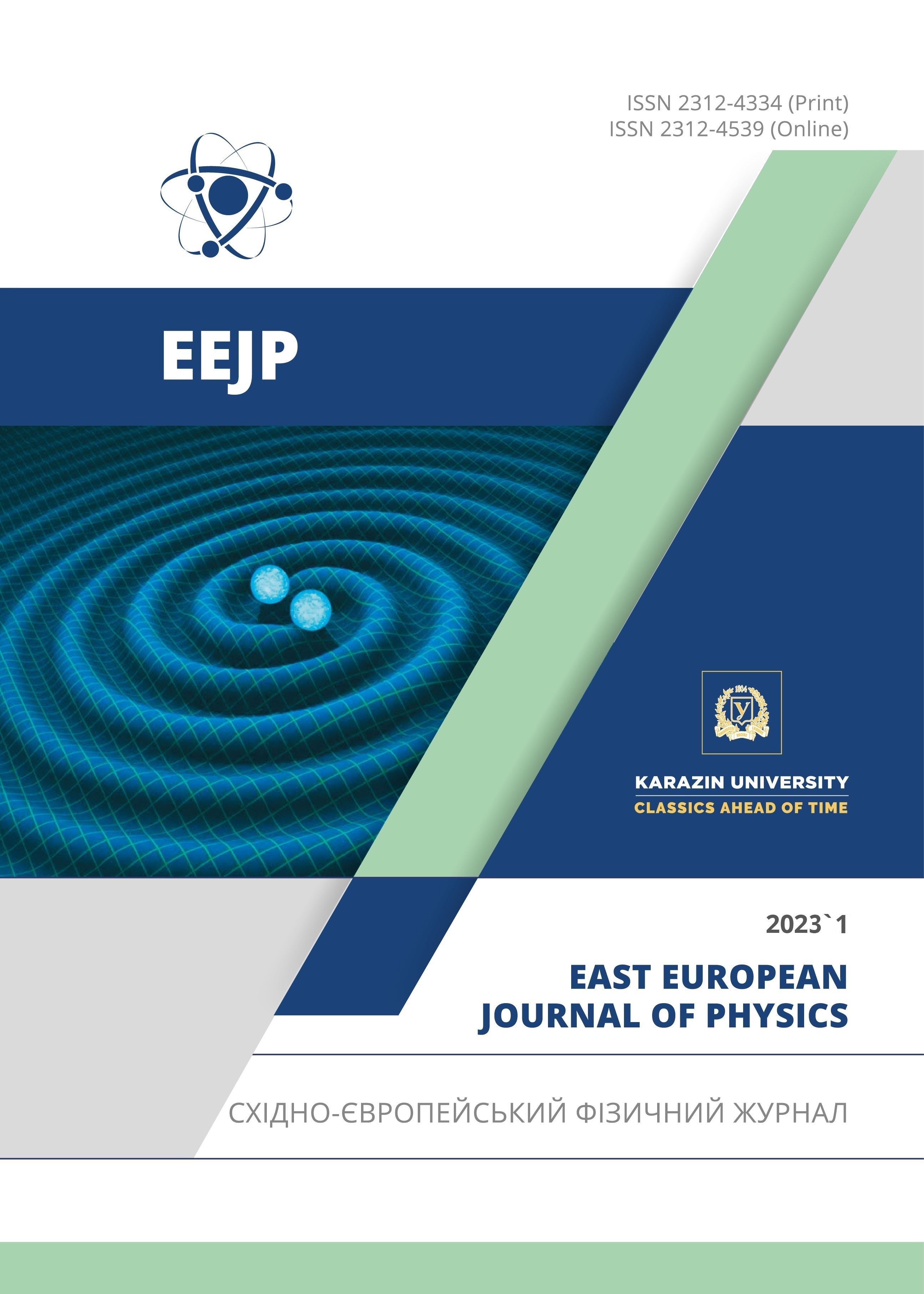Evaluation of the Influence of Body Mass Index and Signal-to-Noise Ratio on the PET/CT Image Quality in Iraqi Patients with Liver Cancer
Abstract
Image quality has been estimated and predicted using the signal to noise ratio (SNR). The purpose of this study is to investigate the relationships between body mass index (BMI) and SNR measurements in PET imaging using patient studies with liver cancer. Three groups of 59 patients (24 males and 35 females) were divided according to BMI. After intravenous injection of 0.1 mCi of 18F-FDG per kilogram of body weight, PET emission scans were acquired for (1, 1.5, and 3) min/bed position according to the weight of patient. Because liver is an organ of homogenous metabolism, five region of interest (ROI) were made at the same location, five successive slices of the PET/CT scans to determine the mean uptake (signal) values and its standard deviation. We obtained the liver's Signal-to-Noise Ratio from the ratio of both. Weight, height, SNR, and Body Mass Index were determined using a spreadsheet, and graphs were created to show the relationship between these variables. The graphs demonstrated that SNR decreases when BMI increases and that, despite an increase in injection dose, SNR also decreases. This is because heavier individuals take higher doses and, according to reports, have lower SNR. These results show that, despite receiving larger FDG doses, heavier patients' images, as measured by SNR, are of lower quality than thinner patients' images.
Downloads
References
N. Waeleh, M.I. Saripan, M. Musarudin, S. Mashohor, and F.F.A. Saad, “Correlation between 18F-FDG dosage and SNR on various BMI patient groups tested in NEMA IEC PET phantom”, Applied Radiation and Isotopes 176, 109885 (2021). https://doi.org/10.1016/j.apradiso.2021.109885
A.K. Yadav, and N.S. Desai, “Cancer stem cells: acquisition, characteristics, therapeutic implications, targeting strategies and future prospects”, Stem Cell Rev. Reports, 15, 331 (2019). https://doi.org/10.1007/s12015-019-09887-2
M.C. Liu, G.R. Oxnard, E.A. Klein, C. Swanton, M.V. Seiden, CCGA Consortium, “Sensitive and specific multi-cancer detection and localization using methylation signatures in cell-free DNA”, Ann. Oncol. 31, 745 (2020). https://doi.org/10.1016/j.annonc.2020.02.011
E. Hubbell, C.A. Clarke, A.M. Aravanis, and C.D. Berg, “Modeled reductions i late-stage cancer with a multi-cancer early detection test”, Canc. Epidemiol. Biomarkers Prev. 30, 460 (2020). https://doi.org/10.1158/1055-9965.EPI-20-1134
M.R. Hasan, S.M. Kadam, and S.I. Essa, “Diffuse Thyroid Uptake in FDG PET/ CT Scan cCan Predict Subclinical Thyroid Disorders”, Iraqi Journal of Science, 63(5), 2000 (2022). https://doi.org/10.24996/ijs.2022.63.5.15
S. Kalman, and T. Turkington, “Introduction to PET instrumentation (multiple letters)”, J. Nucl. Med. Technol. 30, 63 2002. PMID: 12055279
N. Shimada, H. Daisaki, T. Murano, T. Terauchi, H. Shinohara, and N. Moriyama, “Optimization of the scan time is based on the physical index in FDG-PET/CT (in Japanese with English abstract)”, Nihon Hoshasen Gijutsu Gakkai Zasshi, 67(10), 1259 (2011). https://doi.org/10.6009/jjrt.67.1259
World Health Organization, Builiding foundations for health, progress of member states: report of the WHO Global observatory for health, (World Health Organization, 2006).
E.H. de Groot, N. Post, R. Boellaard, N.R.L. Wagenaar, A.T.M. Willemsen, and J.A. van Dalen, “Optimized dose regimen for whole-body FDG-PET imaging”, EJNMMI Research, 3, 63 (2013). https://doi.org/10.1186/2191-219x-3-63
R.D. Badawi, P.K. Marsden, B.F. Cronin, J.L. Sutcliffe, and M.N. Maisey, “Optimization of noise-equivalent count rates in 3D PET”, Phys. Med. Biol. 41, 1755 (1996). https://doi.org/10.1088/0031-9155/41/9/014
Y. Masuda, C. Kondo, Y. Matsuo, M. Uetani, and K. Kusakabe, “Comparison of imaging protocols for 18F-FDG PET/CT in overweight patients: optimizing scan duration versus administered dose”, J. Nucl. Med. 50, 844 (2009). https://doi.org/10.2967/jnumed.108.060590
Y. Sugawara, K.R. Zasadny, A.W. Neuhoff, and R.L. Wahl, “Reevaluation of thestandardized uptake value for FDG: variations with body weight and methods for correction”, Radiology, 213, 521 (1999). https://doi.org/10.1148/radiology.213.2.r99nv37521
M. Danna, M. Lecchi, V. Bettinardi, M. Gilardi, C. Stearns, G. Lucignani, and F. Fazio, “Generation of the acquisition specific NEC (AS-NEC) curves to optimize the injected dose in 3D 18F-FDG whole body PET studies”, IEEE Trans. Nucl. Sci. 53, 86 (2006). https://doi.org/10.1109/TNS.2005.862966
C.C. Watson, M.E. Casey, B. Bendriem, J.P. Carney, D.W. Townsend, S. Eberl, S. Meikle, and F.P. DiFilippo, “Optimizing injected dose in clinical PET by accurately modeling the counting-rate response functions specific to individual patient scans”, J. Nucl. Med. 46, 1825 (2005). PMID: 16269596
Z.S. Mohammad, and J.M. Abda, “Positron Interactions with Some Human Body Organs Using the Monte Carlo Probability Method”, Iraqi Journal of Physics, 20(3), 50 (2022). https://doi.org/10.30723/ijp.v20i3.1026
Copyright (c) 2023 Aya B. Hade, Samar I. Essa

This work is licensed under a Creative Commons Attribution 4.0 International License.
Authors who publish with this journal agree to the following terms:
- Authors retain copyright and grant the journal right of first publication with the work simultaneously licensed under a Creative Commons Attribution License that allows others to share the work with an acknowledgment of the work's authorship and initial publication in this journal.
- Authors are able to enter into separate, additional contractual arrangements for the non-exclusive distribution of the journal's published version of the work (e.g., post it to an institutional repository or publish it in a book), with an acknowledgment of its initial publication in this journal.
- Authors are permitted and encouraged to post their work online (e.g., in institutional repositories or on their website) prior to and during the submission process, as it can lead to productive exchanges, as well as earlier and greater citation of published work (See The Effect of Open Access).








